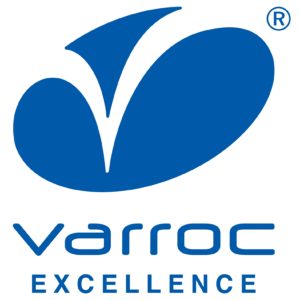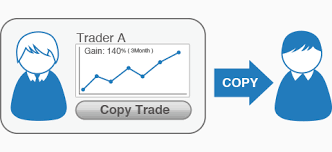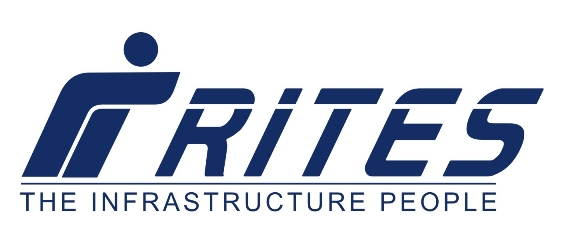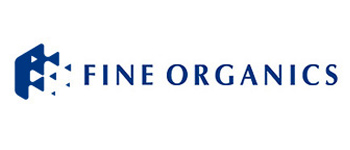One of our favorite investors here at The Acquirer’s Multiple is Bruce Berkowitz. He is the Founder and Chief Investment Officer of Fairholme Capital Management, and President and a Director of Fairholme Funds. In 2010 Berkowitz was named as the 2009 Domestic-Stock Fund Manager of the Year by Morningstar as well as the Domestic-Stock Fund Manager of the Decade (2000-2009), also by Morningstar. Most recently, he was named 2013’s Money Manager of the Year by Institutional Investor Magazine.
Here’s an excerpt from an interview with Berkowitz in which he succinctly lays out his three-step approach to value investing, including the example of Bank of America:
At Fairholme, we’re very focused on price. Price matters most to us. And we think that price determines much of the success you’re gonna have in the future. So rather than predict what’s going to happen with the company we try to price it correctly with a large margin of safety. So pricing with a significant margin of safety is very important in our rule number one of not losing.
Once we determine what a cheap price is, our next step is to look at the investment and the underlying company and stress test it to determine all the ways that business can go wrong, the environment can go wrong, the balance sheet can go wrong. Try to kill the company.
If we can’t kill the company and we’re buying it at a price that reflects near death we may be onto something very good.
Continue Reading →

Aurangabad-based Varroc Engineering plans to launch its IPO next week and has priced the offer in the range of INR965 – 967 per share. The IPO will involve sale of 20,221,730 shares through an Offer For Sale (OFS), amounting to INR1,955.4 crore at the upper end of the price end. Investors can place orders for minimum 15 shares and in multiples thereafter. All these shares of the auto component manufacturer will be sold by existing shareholders. While the positive response to recent IPOs of RITES Limited and Fine Organic Industries indicates the positive sentiment, it is better to check the fundamentals before committing your money and Varroc Engineering IPO review is a step in this direction.
All OFS
As mentioned above, all the shares sold in the IPO will be offered by existing shareholders and thus, the company will not get anything from IPO proceeds. Among the selling shareholders are Omega TC Holdings Pte Ltd, Tata Capital Financial Services Limited and promoter Tarang Jain.
Omega TC Holdings made an investment in the company in March 2014 which has resulted in its stake going up to 12.55%. The Singapore-based private equity firm plans to sell its entire shareholding of 16,917,130 shares. Similarly, Tata Capital Financial Services plans to sell its 1.15% equity stake or 1,552,040 shares. Tarang Jain, who currently owns 46.35% equity stake in the company, plans to offload 1,752,560 shares which will lead to his stake dropping to just above 45%.
Continue Reading →

Mirror trading is the act of simply copying or ‘mirroring’ a different person’s trades. The idea is that one should be able to simply copy the action of a successful trader, and then reap the same rate of success.
As simple and intuitive as this proposition sounds, mirror trading is actually a bad idea. Even if someone were to closely follow the actions of a consistently successful trader, the inherent delay between the original trade and the mirror trade leads to reduced profits on successful trades and expanded losses on unsuccessful ones.
Mirror Trading and Timing
The most difficult aspect of trading is timing. Identifying good trades is a necessary first step, but the actual execution itself is the most challenging part of trading and will be the final determinant of the rate and degree of trading success.
Continue Reading →
One of the best papers ever written on investing is The Wisdom of Great Investors, provided by Davis Advisors.
Davis Advisors was founded by legendary investor Shelby Cullom Davis, a leading financial advisor to governors and presidents, who parlayed an initial investment of $100,000 in the late 1940s into more than $800 million by the end of his career in the early 1990s. In 1969, Shelby Cullom Davis’s son, Shelby M.C. Davis, founded Davis Advisors after serving as the head of equity research at The Bank of New York.
Shelby Cullom Davis famously said:
“You make most of your money in a bear market, you just don’t realize it at the time.”
This timeless paper is a great reminder that wherever we are in the history of investing it is crucial that we don’t forget the painful lessons from investors of the past. Here are the most important takeaways from the paper:
Overview
It is important to understand that periods of market uncertainty can create wealth-building opportunities for the patient, diligent, long-term investor. Taking advantage of these opportunities, however, requires the willingness to embrace and incorporate the wisdom and insight offered in these pages. History has taught us that investors who have adopted this mindset have met with great success.
Continue Reading →

Rites Limited (Rites) (erstwhile known as Rail India Technical & Economic Services Ltd.) is a wholly owned Government Company, a Miniratna (Category – I) Schedule ‘A’ Public Sector Enterprise and a leading player in the transport consultancy and engineering sector in India and the only company having diversified services and geographical reach in this field under one roof. It has an experience spanning 43 years and undertaken projects in over 55 countries including Asia, Africa, Latin America, South America and Middle East regions. Rites is the only export arm of Indian Railways for providing rolling stock overseas (other than Thailand, Malaysia and Indonesia). The company is a multidisciplinary engineering and consultancy organization providing a diversified and comprehensive array of services from concept to commissioning in all facets of transport infrastructure and related technologies.
Rites was incorporated by the Ministry of Railways, Government of India (“MoR”) and have the benefit of being associated with the Indian Railways, which is the fourth longest rail network in the world. It has developed expertise in (1) Design, engineering and consultancy services in transport infrastructure sector with focus on railways, urban transport, roads and highways, ports, inland waterways, airports and ropeways; (2) Leasing, export, maintenance and rehabilitation of locomotives and rolling stock, (3) Undertaking turnkey projects on engineering, procurement and construction basis for railway line, track doubling, 3rd line, railway electrification, up gradation works for railway transport systems and workshops, railway stations, and construction of institutional/ residential/ commercial buildings, both with or without equity participation; and (4) Wagon manufacturing, renewable energy generation and power procurement for Indian Railways through our collaborations by way of joint venture arrangements, subsidiaries or consortium arrangements.
Continue Reading →
 Fine Organic Industries Ltd. (FOIL) is the largest manufacturer of oleochemical-based additives in India and a strong player globally in this industry. It produces a wide range of specialty plant derived oleochemical-based additives used in food, plastic, cosmetics, paint, ink, coatings and other specialty application in various industries. As at March 31, 2018, FIL had a range of 387 different products sold under the ‘Fine Organics’ brand. It is the first company to introduce slip additives in India and is the largest producer of slip additives in the world. As on 31.03.18 it has 631 direct customers (i.e., end-users of products) and 127 distributors from 69 countries. Its customer list comprises of multinational, regional and local players manufacturing consumer products and petrochemical companies and polymer producers globally. FOIL’s plastics additives and specialty additives are also used in the packaging of foods and other fast moving consumer goods.
Fine Organic Industries Ltd. (FOIL) is the largest manufacturer of oleochemical-based additives in India and a strong player globally in this industry. It produces a wide range of specialty plant derived oleochemical-based additives used in food, plastic, cosmetics, paint, ink, coatings and other specialty application in various industries. As at March 31, 2018, FIL had a range of 387 different products sold under the ‘Fine Organics’ brand. It is the first company to introduce slip additives in India and is the largest producer of slip additives in the world. As on 31.03.18 it has 631 direct customers (i.e., end-users of products) and 127 distributors from 69 countries. Its customer list comprises of multinational, regional and local players manufacturing consumer products and petrochemical companies and polymer producers globally. FOIL’s plastics additives and specialty additives are also used in the packaging of foods and other fast moving consumer goods.
The company manufactures additives from base oleochemicals is a highly specialised and fully atomized process. Hence, many of these additives are specialty products, and this industry enjoys premium margins with only a few players dominating the industry globally. The company has three production facilities in Maharashtra -one in Ambernath, one in Badlapur and one in Dombivli. As at March 31, 2017, these three facilities have a combined installed capacity of approximately 64,300 tonnes per annum. FOIL is in the process of setting up an additional production facility in Ambernath with a planned installed capacity of 32,000 tonnes per annum and expects it to commence operations in the fourth quarter of Fiscal 2019. In addition, it is planning to set up a new production facility in Leipzig, Germany with a planned initial installed capacity of 10,000 tonnes per annum and expects to commence operations in the third quarter of Fiscal 2020. This facility will be owned and operated by a joint venture company with 50% equity interest by FOIL.
Continue Reading →
This is an oldie but goodie – Peter Lynch on how to pick stocks. By chance, we were also doing the Lynch book list and ran into some confusion if anyone knows please let us know
Here are the obvious three
The Davis Dynasty: Fifty Years of Successful Investing on Wall Street says its by John; Peters S. Lynch (foreword) Rothchild, I would assume the foreword for a book about Shelby Davis would be the investor Peter Lynch but we were unlear if he had a middle S initial (or if he did not, is that a typo? – obviously can read the book itself but hard to find some of these out of print books and we only have so much time and rsources) in the end we were not sure so would want to exclude it. We will have our list for better or worse soon. We also transcribed the following video – it is not verbatim and is for information purposes only
Enjoy
Continue Reading →
So much has been written about vicarious learning i.e. learning from mistakes of others. It is humbling to admit that despite all the knowledge out there, I failed to learn vicariously. The purpose of writing this piece is to put down the learning’s (very expensive ones) over the last decade or so. I hope to smarten up in the future though.
Before writing about what did not work, it is important to set the context. There is no best or the right way to invest – investors have successfully generated huge returns from different investing strategies – be it buying and holding quality companies, chasing growth even at high valuations, buying cheap companies betting on turnarounds etc. People have made large amount of wealth by having concentrated as well as diversified portfolio. So investors have to explore what works for them, given their financial requirements, temperament, skill and time horizon.
Two important factors to consider while looking at the mistakes (and lessons) are:
- Allocation strategy: diversified or concentrated. I go with a concentrated strategy so these mistakes are more relevant in that context.
- Portfolio approach: It is important to look at the portfolio return and how the portfolio is structured. This is different from trying to maximize returns from each individual stock.
The major mistakes (with very high opportunity cost) made over the past years:
Continue Reading →
You’ll LOVE today’s lesson because…
I’m going to teach you a Moving Average trading strategy that I’ve been using for years (and no it’s not Moving Average crossover).
In fact:
It’s a “buy low sell high” trading strategy that can be applied to the Forex, Futures, and Stock markets.
I’ll reveal the full details of the trading strategy and leave no stones unturned.
This includes the exact trading setup I look for, entries, exits, and stop loss.
And how you can use this strategy to capture a swing for consistent income or, ride massive trends and grow your wealth over time.
Continue Reading →

Mark to market refers to an investment measure or accounting tool used to record an asset’s value to reflect the market value of the security rather than its book value.
The tool is commonly used on futures accounts and helps to ensure that all margin requirements have been completed. When it comes to mutual funds, mark to market refers to how a fund’s net asset value is calculated every day based on the underlying investment closing prices.
Why It’s Important
In security trading, when a portfolio or investment is marked to market, then its value is usually changed in order to reflect the current market price. Investors usually take advantage of this when they are holding a position through the end of the year. Instead of being forced to close it out to realize a loss or gain, you can simply to choose to mark to market the position which will establish the position at the market price for when you file your taxes.
Continue Reading →










